The converging art careers of Henry Moore and Bill Brandt
A new exhibition and book explore the intersecting careers of two renowned British artists of the 20th Century: sculptor Henry Moore and photographer Bill Brandt.
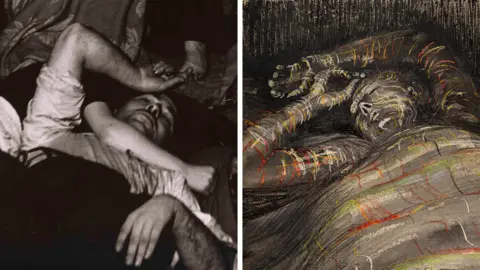 Bill Brandt / Henry Moore
Bill Brandt / Henry MooreThe two artists, born ten years apart, were commissioned by the UK government in the 1930s; Brandt as a photojournalist, and Moore as a war artist.
They both created images of civilians sheltering from the Blitz in the London Underground during World War Two, seen above.
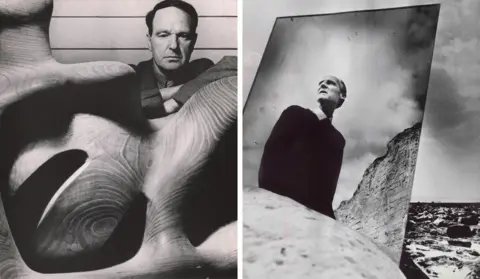 Bill Brandt
Bill BrandtThe new exhibition - at The Hepworth Wakefield - explores how the two artists responded to the British landscape and its communities.
The exhibition brings together more than 200 works, including well-known sculptures and photographs, along with drawings, unprinted negatives and photo collages.
"Both artists had a fascination and poetic sensibility for capturing the spirit of place," said Simon Wallis, Director of The Hepworth Wakefield.
"It is particularly poignant to be presenting this exhibition in West Yorkshire, where Henry Moore was born and grew up."
Brandt and Moore met in 1942, when Brandt was commissioned to take a portrait of Moore in his studio for a 10-page spread on the artist in Lilliput magazine. The feature juxtaposed the two artists' images of the Blitz shelters.
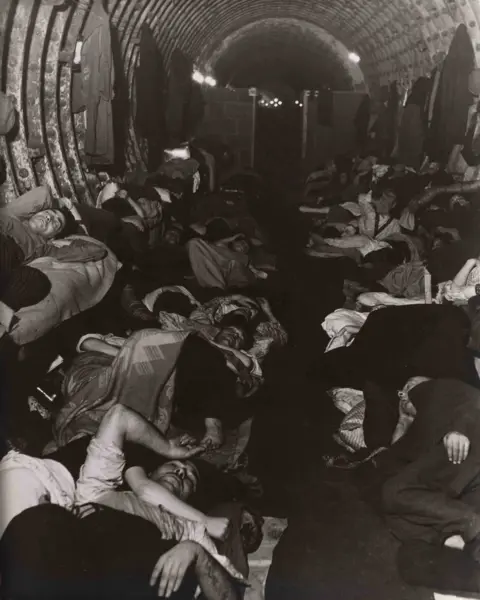 Bill Brandt
Bill Brandt
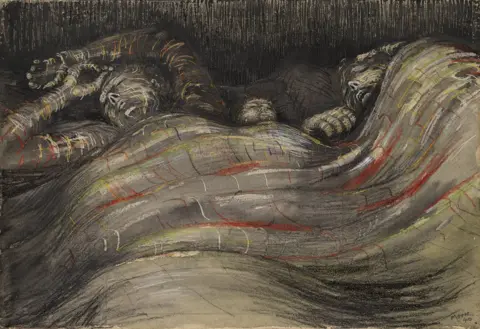 Henry Moore
Henry Moore"Both artists developed a strikingly similar visual vocabulary of displacement, isolation, threat, and vulnerability that presages images of larger-scale terror made later in the war," writes Courtney J Martin, the director of Yale Center for British Art, in a foreword to the book Bill Brandt | Henry Moore.
Throughout their careers, they crossed over into each other's predominant creative medium. Moore used photography to present his work, and Brandt looked to sculpture as a way of considering nature, landscape and the human body.
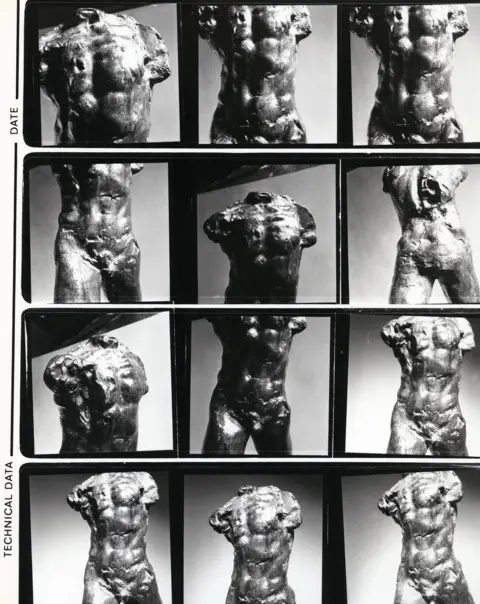 Henry Moore
Henry MooreIn their early work, Brandt and Moore were drawn to documenting ordinary people, labour and the home.
Brandt highlighted social deprivation in 1930s Depression-era Britain, with his evocative photographs of impoverished mining communities and families in the North of England.
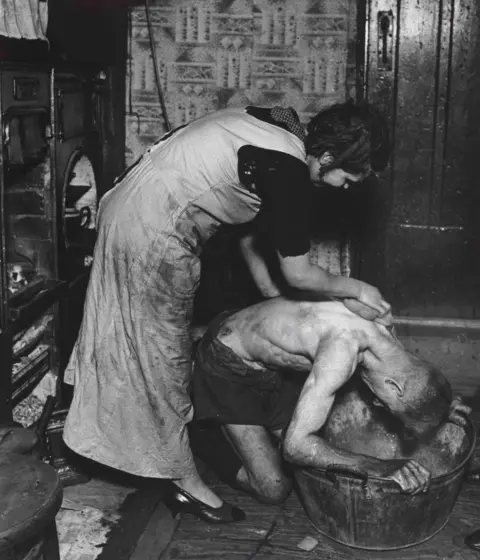 Bill Brandt
Bill Brandt
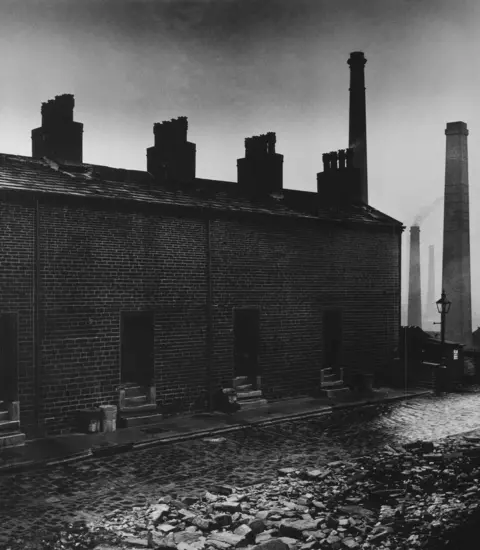 Bill Brandt
Bill Brandt
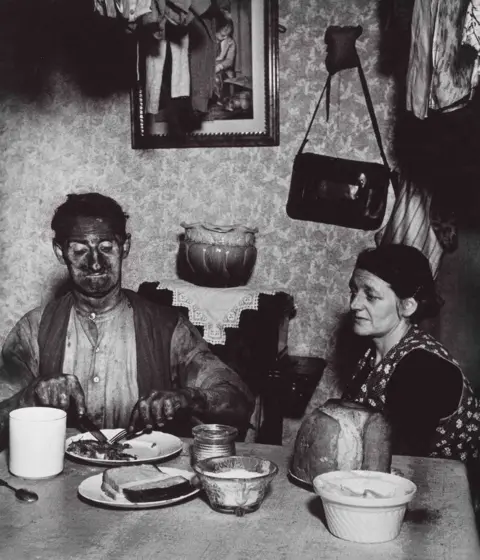 Bill Brandt
Bill Brandt
 Bill Brandt
Bill BrandtMoore was one of eight children in a mining family in Castleford, a colliery town in Yorkshire, a place he would later sketch to document the war effort.
A frequent subject for Moore was the depiction of family groups in both sculpture and drawings, a theme that started with his early drawings of families in shelters during the Blitz.
In the 1950s, Moore made a series of works which used groupings of figures, reminiscent of his shelter drawings.
 Henry Moore
Henry Moore
 Henry Moore
Henry Moore
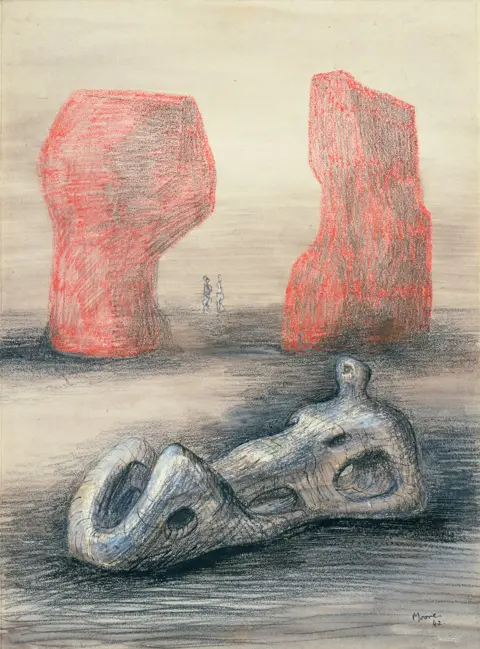 Henry Moore
Henry MooreAfter the urban subjects which Brandt and Moore portrayed during the war, the artists later turned to nature for sources of inspiration.
They were interested in rock formations, geological artefacts and megalithic sites like Stonehenge and Avebury.
Indeed, Moore let it be known that he sculpted with stone quarried in Britain.
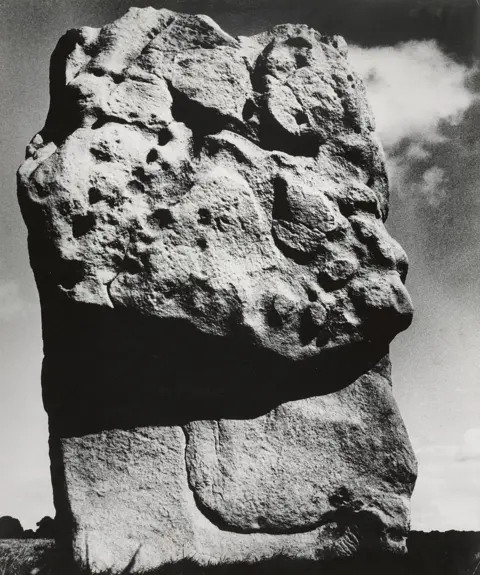 Bill Brandt
Bill BrandtThe exhibition Bill Brandt | Henry Moore is at The Hepworth Wakefield until 31 May. The accompanying book is published by Yale University Press.
